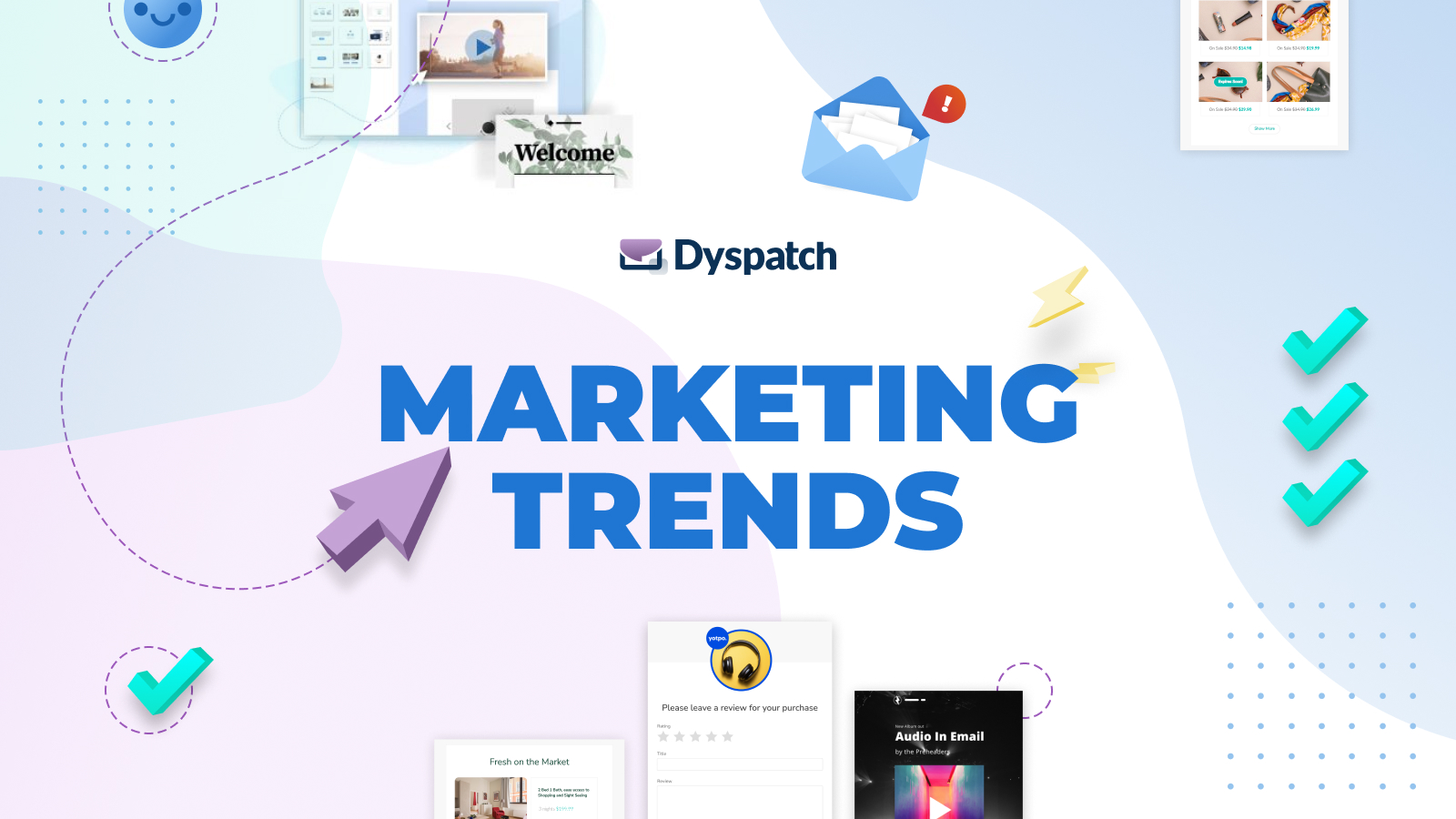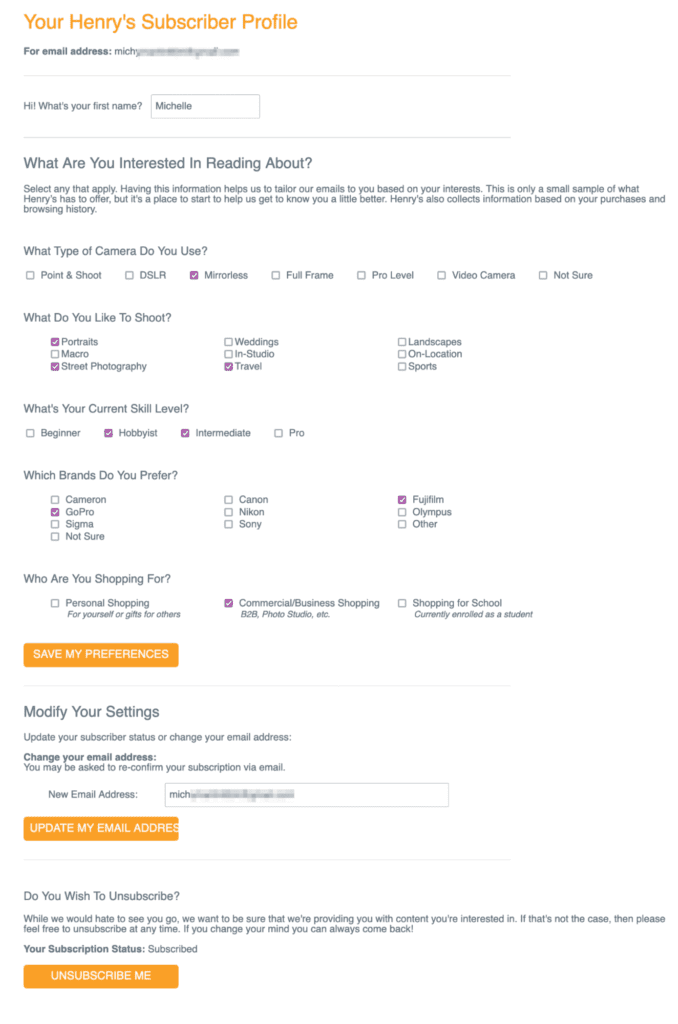Why invest in email marketing when you can dance on TikTok and go viral, right?
Hold your jig: Email marketing isn’t only for the rhythmically challenged. It’s still a key marketing channel in 2025 and will stay that way for the foreseeable future.
But, like all channels, best practices change often.
Here are the five most important 2025 email marketing trends on the horizon, plus ways to implement them starting right now.
Trend #1: Privacy-compliant tracking
Just like the advent of GDPR and cookie tracking permissions on websites, we live in a post-email privacy world, too.
Thanks to the launch of Apple Mail Privacy Protection in Q4 2021, email marketers are already used to working with limited data. Since Apple’s update, iPhone, iPad, and Mac users can choose to camouflage their email address when signing up for newsletters or apps, and hide their IP address from email service providers (ESPs).
This means you can’t track when—or if—they open your email or their location.
At least, not very accurately. Since Apple’s privacy protection loads tracking images through a proxy server, it either won’t report opens that are happening, or it may report false opens.
Apple Mail holds 57% of the current email client market share (as of July 2022), so even if the other 43% of your opens are being accurately tracked, you can’t rely on it.
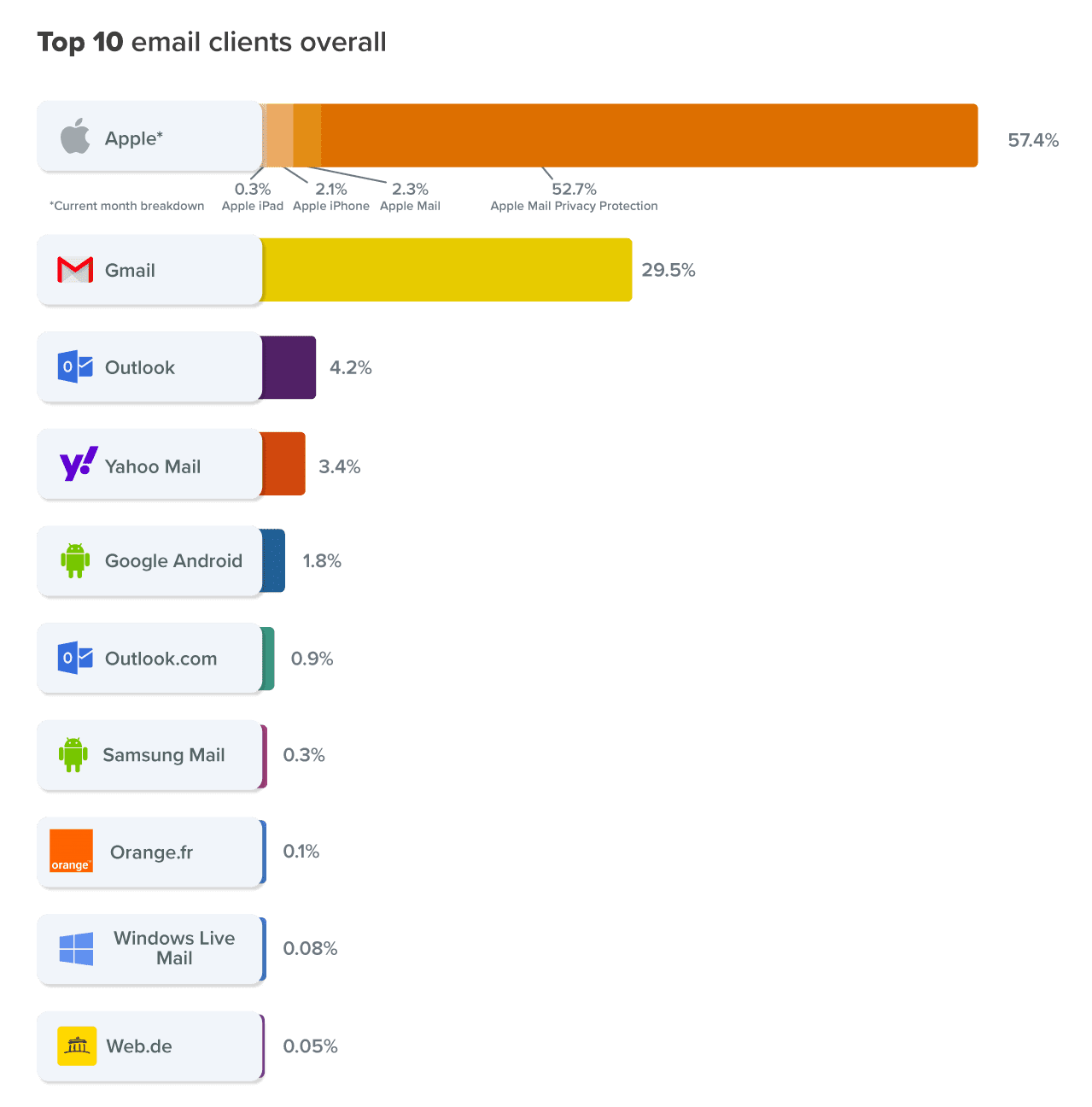
What’s a marketer to do?
Ditch your reliance on generic tracking methods and focus on what matters: Who’s interested in specific offers, and what your most popular content is.
Your email platform probably offers analytics details for what each user has clicked and your overall most popular email clicks. But be sure to add in your own UTM parameters, too. This allows you to make sense of per-campaign email marketing data in a larger context, such as in Google Analytics compared to your other traffic.
Pssst: If you use Dyspatch, you can save tons of time by setting default UTM parameters for each template.
Your goal should be getting clicks, not opens. Clickers are your engaged audience.
Besides making your email content interesting enough to click (#duh), try adding a quick feedback selector to the bottom of your emails. This gives someone a reason to click, and it provides valuable information about what content your audience likes, whether they click elsewhere in the email or not.
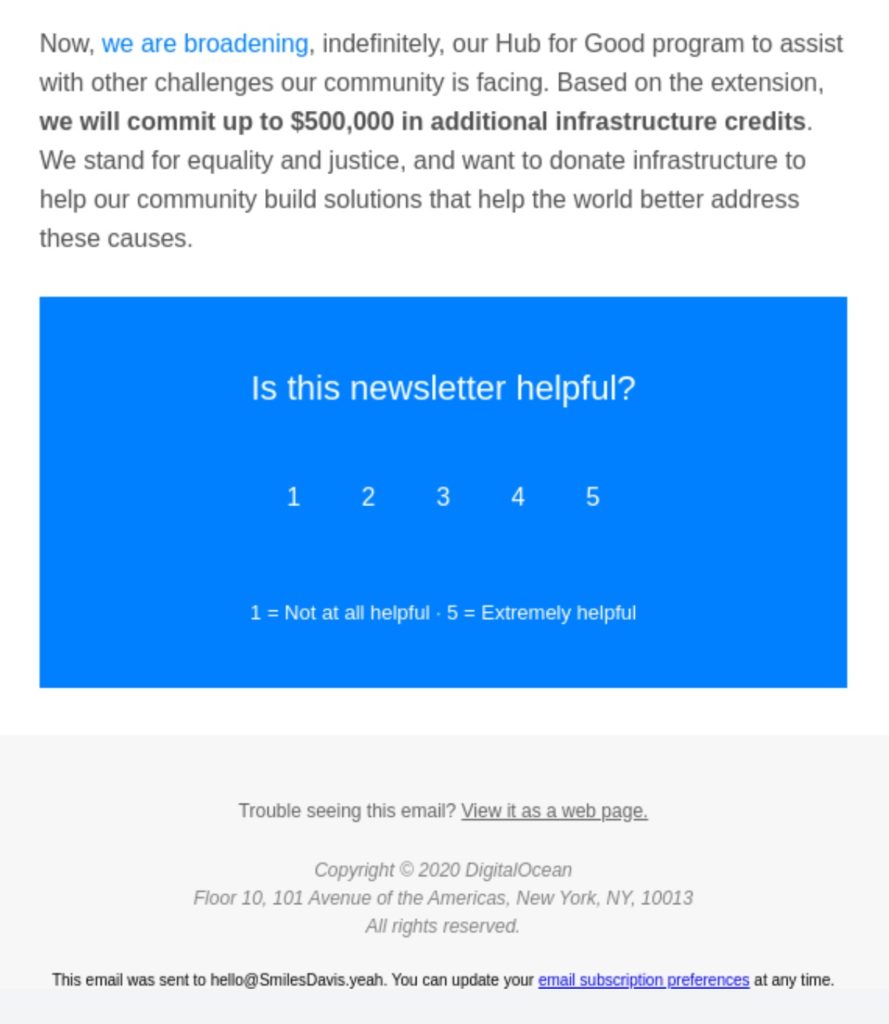
Trend #2: Track the right metrics
As discussed above, open rates are out. We know those numbers have never been 100% accurate due to the plethora of privacy tools available in email apps.
Instead, pay attention to your subscribe/unsubscribe ratio as a quick snapshot of your overall list health. But for the real information you need to evaluate your email marketing strategy, you need to dig deeper.
According to email expert Chad S. White, key metrics to pay attention to are a mix of zero and first-party data.
Zero-party data — A.K.A. the questions you directly ask subscribers — to track:
- Specific preferences. Chad explains why you shouldn’t make assumptions: “A classic example is apparel companies asking subscribers their gender as a way of determining what kinds of products to show them … the answer isn’t as useful as it could be if you asked a much better question like What kinds of apparel are you interested in?”
- Preference updates over time. People’s interests and preferences change. A beginner photographer wants different information than a pro, but that beginner will advance their skillset over months and years. Re-ask your subscribers about themselves every so often to keep data fresh.
First-party data — A.K.A. the data you observe — to track:
- Email content clicks. Of course, track what subscribers are clicking in your emails. Depending on your email marketing complexity, you may want to further filter click data by customer persona, average spend, or other attributes.
- Website content. Although, not all data is equally valuable, as Chad elaborates: “Is someone interested in skiing if they look at one set of skis for 2 minutes? Maybe. But if they also look at ski boots and poles, that’s a much stronger signal.”
Direct feedback is always your best metric.
Want an easy way to collect it? Try out polls where users can tap their answer from an email without leaving their inbox, just like this example from GoDaddy.
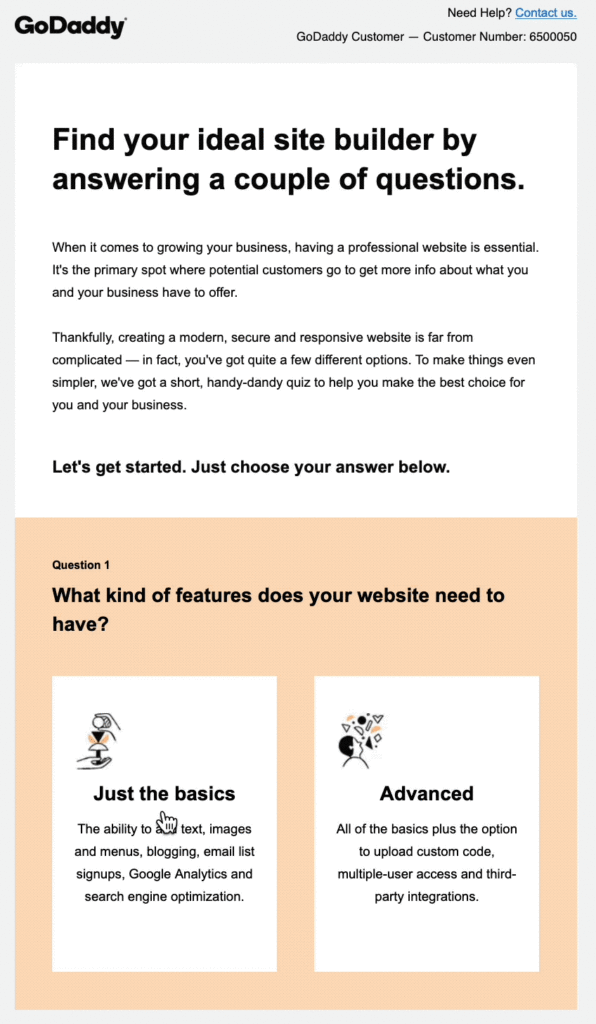
Dynamic Email content easily uplevels your emails. With Dyspatch, you can drag-and-drop blocks to turn your emails into data collection machines your subscribers want to engage with.
(New to interactive email? Here’s our Ultimate Guide to Interactive Email to get you started.
Trend #3: Pro personalized email
People expect personalization: Half (49%) of your leads say they’d become regular customers if offered a personalized experience. But only 35% of brands think they’re doing a good job offering those experiences.
The expectation to personalize is growing every year, with an eight point jump from 2020 to 2022. 88% of consumers now say the experience a company provides is as important as its product or service quality.
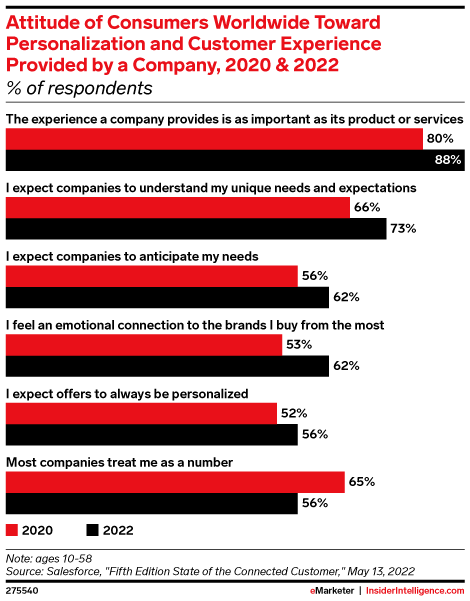
What counts as “good” personalization?
- More personalized than “Hi, [first-name]!”
- Respects privacy legislation.
- Provides a useful experience for your customer, not just valuable marketing data for you.
Focus on making things easier for your customers with personalized email experiences.
It’s worth it: Brands who invest in personalization report increased engagement and conversions.
AMP for Email is a perfect fit here since it uses customer account data to personalize the experience. And, it refreshes dynamically each time the email is opened, so the information is always up to date—just like a webpage.
The possibilities are endless, but a common use is for tracking e-commerce orders. No need to send 5 status update emails and clog up your customers’ inboxes anymore. They get everything they need in one email that auto-updates every time they look at it.
EasyPost is available as a drag-and-drop AMP email block inside Dyspatch.
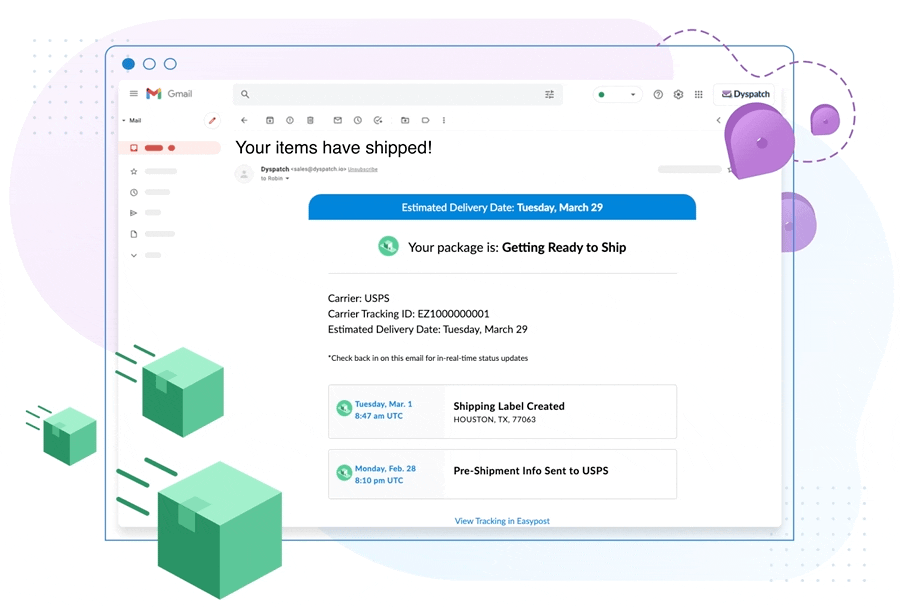
Trend #4: Interactive content
Pop quiz: What’s the goal of email marketing?
To get conversions, right? Right.
Gone are the days where you have to force users to click a link to complete the action you want them to take. With interactive emails, customers can see live stock levels, add an item to their cart, and even complete a checkout right from an email—and so much more.
Besides reducing friction, consumers want interactive emails. Almost two-thirds (60%) of people report engaging with interactive email content.
For service providers, your subscribers can complete an appointment booking inside an email, without the need to click out to a landing page. The convenience of in-email AMP bookings can boost conversions by up to 300%.
It’s easy to set up appointment booking with Dyspatch’s SimplyBook.me integration. You can create booking flows ranging from quick one-clicks to multi-step service selections. Read more in our Ultimate Guide to Interactive Email.
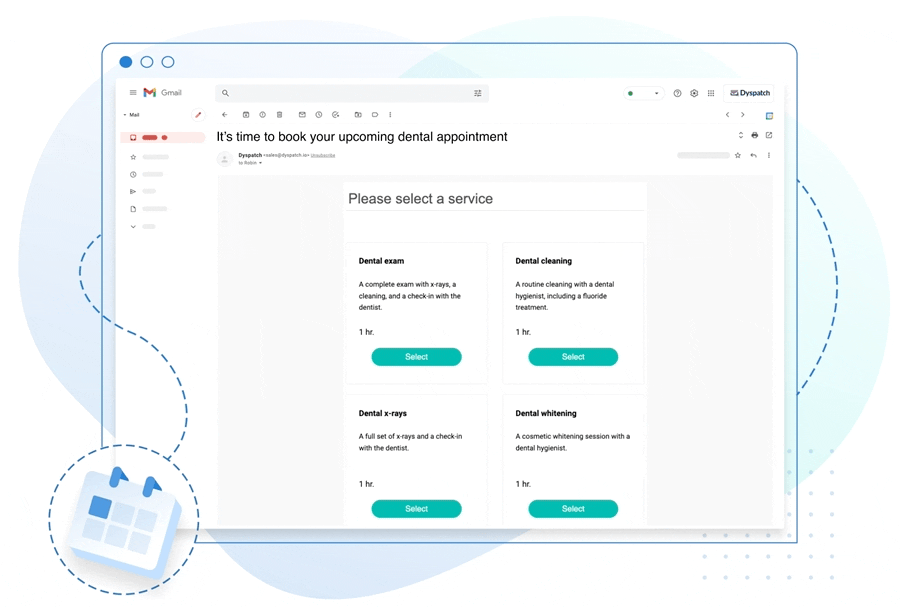
Trend #5: Invest in your newsletter
It’s easy to think of email as only a selling tool but don’t forget about its true purpose: Building a connection between your brand and audience.
Yes, production promotion and discounts are important, but newsletters are still in the top spot: 81% of brands send them.
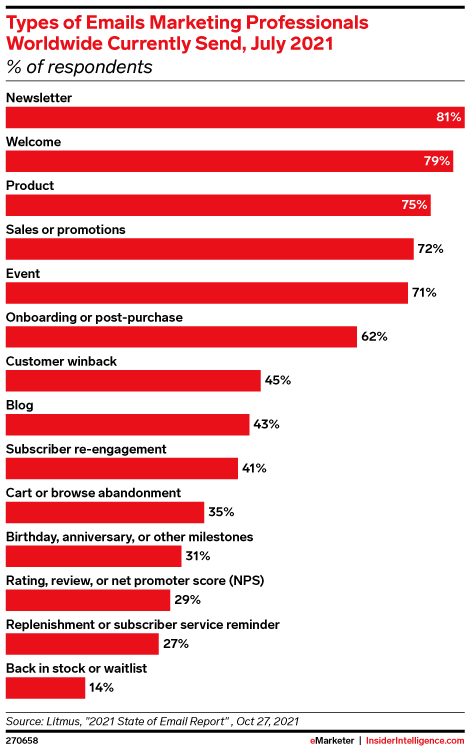
When done right, newsletters can educate your audience and make them feel more connected to your brand. But they can be a liability if your newsletter content isn’t hitting the mark. Uninteresting subject matter is the number one reason people unsubscribe from newsletters.
Mitigate this by allowing your subscribers to dial in what they receive from you. Having an email preferences center shows your subscribers you respect their time, inbox, and privacy.
There is an easy way to add a preference center to your emails:
Link over to a preferences web page
Most ESPs offer a subscriber profile update and/or preferences page. If not, you can code your own.
This page can be as simple or as complicated as you like. More options give your subscribers more control but could be overwhelming to fill out, too.
Henry’s Cameras goes all out, allowing users to personalize their email content by camera type and brand, while also collecting useful information to categorize users by skill level or profession (hobbyist or pro photographers).
Trend #6: Enhanced Privacy-First Segmentation
Building on the privacy trends of 2024, email marketers in 2025 will need to become even more creative about audience segmentation without relying on invasive tracking.
Brands will shift towards:
- Explicit, consent-driven data collection
- Reward-based preference sharing (where subscribers voluntarily provide more detailed information)
- Micro-segmentation based on declared interests and direct feedback
- Contextual targeting that respects individual privacy boundaries
The most successful email programs will treat subscriber data as a precious, collaborative resource—not something to be extracted.
Trend #7: Immersive and Accessibility-Focused Design
Email design in 2025 will prioritize both visual engagement and universal accessibility. This means:
- Responsive designs that work perfectly across all devices
- Built-in accessibility features for subscribers with different abilities
- Interactive elements that are intuitive and easy to use
- Designs that are visually striking but never at the expense of readability
Make connection your priority in 2025 and reap the rewards forever
Yep, we’re gonna say it: Human-to-human (H2H) marketing is all you need to worry about.
Cheesy? Sure, but with increasing email privacy controls like Apple Mail Privacy Protection and governmental legislation, getting to know your audience is key for marketing success.
It sounds easy but it can take awhile to shift your strategy away from reporting simple metrics like opens and clicks, and toward identifying your top content and planning what questions to ask your audience, and how often to ask them.
2025 will be here before you know it. Get a head start on modernizing your email marketing by implementing these five email marketing trends today.

